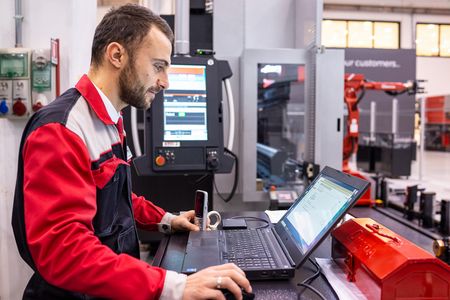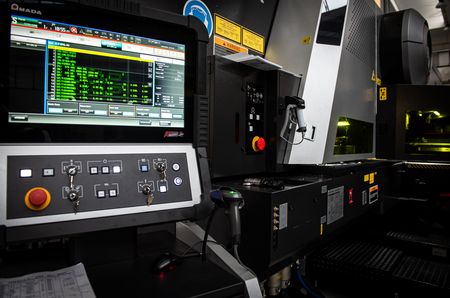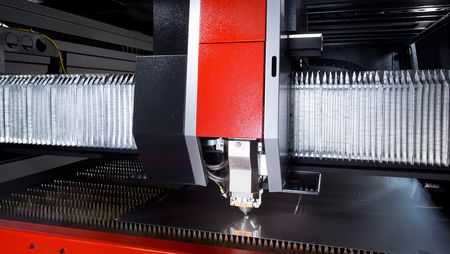The industry has only one way to face and overcome the challenges of increasingly competitive markets:
IT MUST BECOME AGILE, FAST, FLEXIBLE.
It is not a slogan, but a need that is experienced daily by those involved in production: batches shrink, micro-batches and mass customization are important trends, time is getting shorter but you cannot give anything on the quality front. Long-term planning has become almost impossible, because market trends and customer needs change quickly: today, companies that are able to dynamically follow - or better, predict - the moves of the markets win
As evidence of how flexibility is central in manufacturing, consider the continuous growth in popularity of Additive Manufacturing, which for years the Observatory Industry 4.0 of the Politecnico di Milano has included among the enabling technologies of the Smart Factory: the latest figure is an increase in the adoption rate of +34%. Simplifying, Additive Manufacturing includes 3D Printing techniques, which in the industrial macrocosm are used precisely to make the production of micro-batches and unique specimens sustainable (prototyping). Almost superfluous to explain that, using traditional production processes, the costs to be incurred would be very high due to downtime and setup.
The factory is flexible if the whole company is
Accelerating time-to-market and becoming flexible to the needs of markets and customers does not depend only on technology nor even on Additive Manufacturing. Production becomes fast and reactive to market inputs if the whole company is, not only the factory: it is the other business functions that have to understand the market, anticipate trends and adopt a data-driven approach to demand, and only at that point the operations will have to be able, thanks to processes and OT and IT technologies, to accelerate to the maximum the productive processes and Supply Chain. Then, we can talk about Industrial Internet of Things, Cloud Manufacturing and Advanced Automation hypothesis, which compared to traditional automation introduces the element of intelligence: think, just as an example, drones that independently carry out inventory operations in distribution centers during the night.
.
The pillars that make production flexible and fast
Given this, what does a company need to react quickly to markets that are constantly changing, requiring customizations and becoming more competitive every day?

Smart production systems and models
In production, flexibility can be improved by intelligent systems that exceed the traditional rigidity of Operational Technology. Let’s not forget that the whole 4.0 model revolves around the convergence between IT and OT systems: the former have undergone a very strong evolutionary process over the years, the latter have remained more or less stationary. Convergence is creating new challenges, first of all the security of OT systems, but it is also allowing to increase the agility of operational processes thanks to data analysis. Making production data-driven through dedicated execution systems, such as MES, but also IIoT sensors and actuators, innovative human-machine interfaces (VR/AR), Digital Twin and much more, is all aimed at better aligning production to market needs, accelerating processes, reducing the great inefficiencies of traditional production and bringing the producer closer to his customer

Data analysis as a determining factor
Closely related to the previous point is the centrality of data analysis, without which the 4.0 model would probably not exist. Industrial shopfloors are huge repositories of data that must be valued: it is no coincidence that the Observatory of the Politecnico di Milano considers Advanced Analytics as one of the foundations of smart manufacturing. The data is not limited to photographing the state of production, identifying inefficiencies and observing with transparency the progress of the processes, but thanks to techniques such as Machine Learning and AI, can allow the optimization of processes and enable a predictive approach to certain events and anomalies. All this affects the efficiency of production, and therefore time to market. Not only that: the analysis of the data allows the company to respond in the best way (that is, without losing productivity), in front of the various unforeseen of every day like the changes in the production volumes and the insertion of urgent and priority orders.

Development of new skills
To be efficient and flexible, the company must not only have processes and technologies, but also competent operators. Investing in the training of own resources and integrating the team with new professional figures specialized in the analysis of the data is a real obligation for the manufacturing of today and tomorrow, independently from the field

Development of connected ecosystems
Another worth emphasizing aspect is the development of connected ecosystems, a phenomenon that is now normal in many sectors (think of finance), but that in the manufacturing universe is only emerging lately. With the pandemic, many companies have realized that they need valuable partnerships not only to ensure their business continuity, but also to strengthen their agility and productivity. Being able to rely on a wide network of partners makes the company more agile and ready to face new trends, needs and market dynamics, even the most disruptive

The right tools: the case of AMADA combined machines and the ENSIS laser
Last, but not least, point is that of the smart factory machines that, in addition to offering remote control capabilities, effective interfaces and data acquisition and processing, must be designed and built to meet the needs of efficiency and flexibility of the market.
There are many examples of this: in the world of sheet metal processing, AMADA combined machines develop a real synergy between punching and laser cutting and allow to exploit in the same process the peculiarities of both technologies, including the advantage of automatic setup. Flexibility is the key element of the combinations, which by definition eliminate the need for secondary processing and all the waste of time (and materials) connected. The synergistic combination of the two machines allows to realize very complex parts in a short time and therefore to better adapt to the needs of the market, with the addition of automation to affect the efficiency of the process.

The same applies to ENSIS-AJ fiber generator laser cutting machines. Many traditional systems, in fact, are rather limited in terms of versatility and flexibility because they use fiber lasers with fixed beam diameter, which does not make them suitable for all machining. In reality, however, an industrial shop-floor requires the flexibility to work easily on different materials and thicknesses, which was answered with several different machines and technologies. Fortunately, the situation has changed with the advent of automatic systems that can precisely modulate and control the beam diameter, the focal point and the mode depending on the material to be processed, a category in which the ENSIS-AJ range falls. Thanks to proprietary technologies such as the Automatic Collimation System and the Variable Beam Control, the machine allows to obtain extremely precise results on different materials and thicknesses with a single cutting lens, which further accelerates operations and reduces costs, while ensuring maximum flexibility